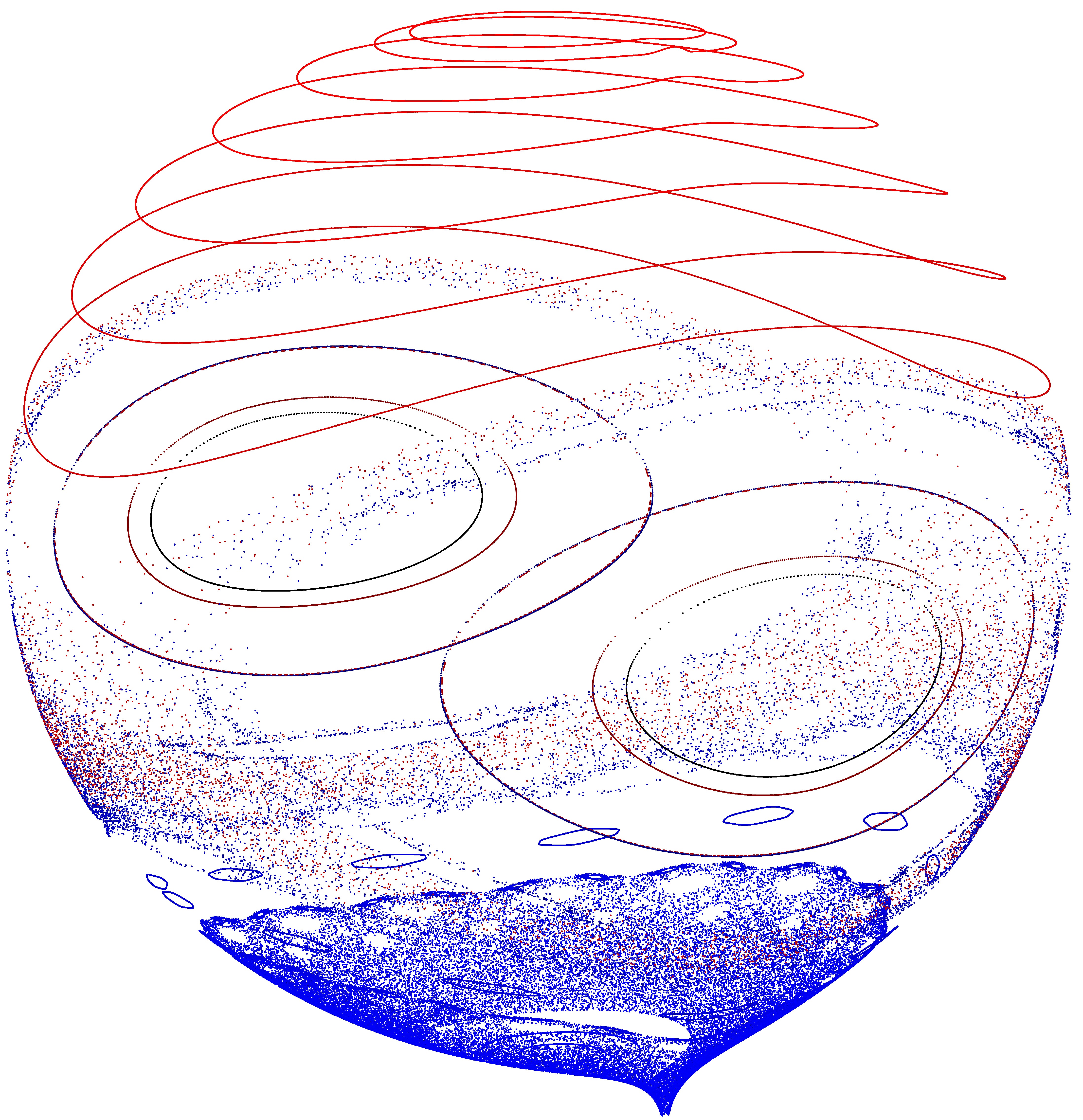Researchers move closer to understanding chaotic motion of a solid body in a fluid

In a paper appearing in the Feb. 24 issue of the "Proceedings of the Royal Society of London A," Virginia Tech Engineering Science and Mechanics Professor Hassan Aref, and his colleague Johan Roenby at the Technical University of Denmark shed new light on the chaotic motion of a solid body moving through a fluid.
They claim to have discovered two basic mechanisms that lead to chaotic motion of the body as it interacts with its vortex wake. The work may lead to better understanding and control of real body-vortex interactions.
Although it goes back to the work of Henri Poincaré at the end of the 19th century, chaos emerged in earnest as a new concept in science in the 1960s. Scientists then realized that even very simple systems, governed by perfectly deterministic laws, could have very complicated and seemingly random behavior. Anyone who has played with dice literally has had hands-on experience with the high sensitivity to initial conditions exhibited by a chaotic system. This makes long-term prediction of the system’s evolution virtually impossible, Aref and Roenby explained.
It has long been known that the motion of a solid object through a fluid may be chaotic. Mechanisms that lead to chaotic motion in such systems are important, sometimes because one wants to avoid them, at other times because one wants to exploit them. For instance, when designing aircraft, one strives to prevent chaotic motion, whereas it might be a good strategy for a prey trying to escape a predator to enter a regime of erratic, unpredictable motion.
Fluid-body interactions are not very well understood. It is, however, reasonably well established that the delicate interplay between the body and the vortices shed from it, and present in the fluid, plays a key role. For example, it may be shown that if the motion is strictly two-dimensional and there are no vortices, chaos cannot occur. Chaos can occur for three-dimensional motion of a solid body through a fluid even in the absence of vortices.
To understand how vortices may create chaos in the body motion, Aref and Roenby studied a simplified body-vortex interaction model. The simplicity of the model allowed the scientists to take well-known, non-chaotic solutions as the starting point and then slowly increase the influence of parameters that would cause chaos to occur. It was by triggering the chaos in this controlled manner that the authors discovered two sources of chaos in the model.
The work “shows how a chaotic region grows from a specific type of equilibrium,” the authors claimed. Aref and Roenby knew from classical hydrodynamics that a body in an “unbounded, ideal liquid has a limiting motion between the rocking and tumbling regime. Adding a vortex to this effectively acts as a random torque on the body.” This is one mechanism for chaos. The other chaotic regime arises when the body is made slightly non-circular. For certain parameter regimes this renders the vortex motion, and thereby its force on the body, chaotic. “The kind of parametric scans we have performed may give important clues as to which geometries and parameter regimes to avoid, if one wants to prevent chaotic motion,” the authors said.
As Aref, Roenby and others unravel the forces that come into play when vortices are produced through interaction between a solid body and the fluid surrounding it, they are furthering the understanding of aerodynamic and hydrodynamic forces, the drag and lift that are paramount in virtually all motion of bodies through air or water.
Aref is Virginia Tech’s Reynolds Metals Professor of Engineering Science and Mechanics. He also holds a Niels Bohr Visiting Professorship at the Technical University of Denmark. Roenby is a Ph.D. student in the mathematics department and the Center for Fluid Dynamics at the Danish University. He is currently a visiting scholar at Imperial College, London.




